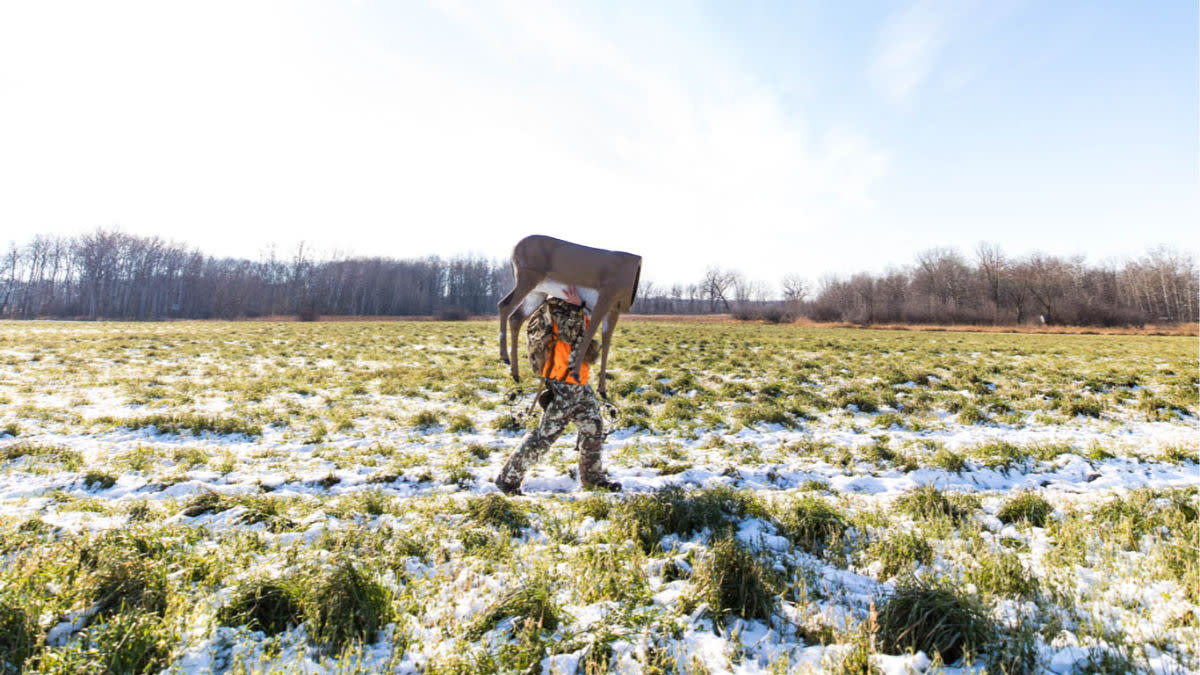
Decoying whitetails into bow range might seem simple enough on the surface. Just take your fake, plant it 20 yards into a field where visibility is good, and wait. After all, it’s November and eventually someone who is angry or horny (or both) will see your faux deer and come in to investigate. If you’ve got a buck decoy set up, he’ll come in to fight. A doe, and well…
Like all of the wonderful products foisted on us by the outdoor industry that promise big buck success, the reality is often far different. A decoy with the wrong posture, like a doe with her ears up and eyes bugged out staring intently into space, won’t send receptive vibes to passing bucks. She’ll spook them, and does too.
Ditto for a buck decoy with a good-sized rack and his ears pinned back. Not all bucks are fighters and if you’re in the market for a decent buck, you might run off potential shooters who would rather not get into a scrap. Choose a decoy that plays into your hunting situation and goals, and then think about your setup.
CJ Davis, president of Montana Decoy, offers some sound advice on this matter. “Place your decoy somewhere that deer would naturally travel already and think about how bucks will approach. Think about the wind, your shooting lanes, and the reality that you’re inviting a buck into a spot you’ve been, to sniff a product you’ve handled.”
Davis’ point about the approach is important. While it’s fun to watch videos of bucks tearing the heads off decoys or circling a fake with their eyes rolled back bull-moose style, the best bet for an opportunity around a decoy is to set up to shoot on the approach. If the deer has to get right next to the decoy before you have a good shot, you’re asking for trouble.
Think about this in terms of two factors—terrain and wind. Where will a buck most likely spot your decoy from, and what is the terrain between there and the decoy? He’s going to try to take a route where he doesn’t lose sight of the decoy, and where he can get downwind if possible. If either of those things means he’ll take a route that won’t allow you to shoot until he reaches the decoy, rethink your setup.
You also never want to surprise a deer with a decoy. They are highly attuned to their environments. On a calm, crisp November morning, a deer is highly unlikely to step into a small clearing and suddenly see a deer at 25 yards they didn’t know was there. This rarely goes over well. Give them time to lay eyes on your setup from a safe distance before they approach.
Lastly, figure out a way to add some movement to your decoy. There are commercially available tails that swish in the lightest breeze, which add realism to any setup. This is often the difference between getting a buck to commit or bail. Deer don’t naturally stand and stare unmoving for fun. They do it when they are trying to figure out if there is danger near. That’s pretty much all a decoy can do, unless you add a little movement. Some hunters also tape a bit of tissue or paper towel to the ears to fully sell the ruse, but if your decoy has a tail that moves, you’re good to go.
There’s no better time than now to decoy bucks, just consider what kind of decoy you’ll use and really think through the variables of each potential setup. A little planning (and a little movement) goes a long way toward solid decoying results.
Feature image via Captured Creative.





